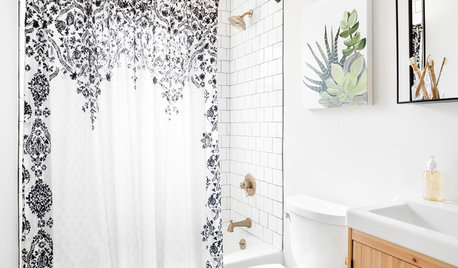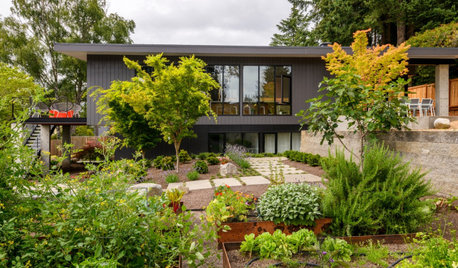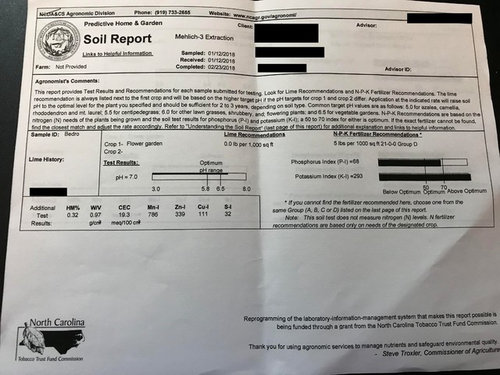Do I need more organic matter? (Soil test results)
TNflowerlover Zone 7a
6 years ago
last modified: 6 years ago
Featured Answer
Sort by:Oldest
Comments (22)
TNflowerlover Zone 7a
6 years agokimmq
6 years agoRelated Professionals
Saint Louis Park Landscape Architects & Landscape Designers · Tempe Landscape Contractors · Allentown Landscape Contractors · Battle Ground Landscape Contractors · Essex Landscape Contractors · Lakeville Landscape Contractors · Lynn Landscape Contractors · Melrose Park Landscape Contractors · New Baltimore Landscape Contractors · Ridgewood Landscape Contractors · Ronkonkoma Landscape Contractors · Salem Landscape Contractors · Puyallup Decks, Patios & Outdoor Enclosures · Spokane Decks, Patios & Outdoor Enclosures · Troy Decks, Patios & Outdoor Enclosurestoxcrusadr
6 years agoTNflowerlover Zone 7a
6 years agotoxcrusadr
6 years agolast modified: 6 years agoTNflowerlover Zone 7a
6 years agoTNflowerlover Zone 7a
6 years agoEmbothrium
6 years agolast modified: 6 years agoTNflowerlover Zone 7a
6 years agolast modified: 6 years agoTNflowerlover Zone 7a
6 years agotoxcrusadr
6 years agoTNflowerlover Zone 7a
6 years agogardengal48 (PNW Z8/9)
6 years agolast modified: 6 years agoTNflowerlover Zone 7a
6 years agolast modified: 6 years agotoxcrusadr
6 years agoWhassisname
6 years agolast modified: 6 years agoTNflowerlover Zone 7a
6 years agoWhassisname
6 years agoTNflowerlover Zone 7a
6 years agotoxcrusadr
6 years agoTNflowerlover Zone 7a
6 years ago
Related Stories

COLORBedroom Color: The Secret to More Sex and More Sleep
Look to surprising revelations about bedroom wall colors to get more of what you want
Full Story
DECORATING GUIDESMore Is More: The 10 Tenets of Maximalist Style
Ready to join the school of over-the-top design? Learn how to embrace excess in your interiors
Full Story
GARDENING GUIDESHow to Stop Worrying and Start Loving Clay Soil
Clay has many more benefits than you might imagine
Full Story
BATHROOM DESIGNA Designer Tests Ideas in Her Own 38-Square-Foot Bathroom
Balancing classic, modern and rustic elements results in a space that welcomes guests
Full Story
GARDENING GUIDES10 Ways to Make Your Garden More Productive
Maximize your garden’s growth and output by building healthy soil, expanding growing space and collecting rainwater
Full Story
GARDENING GUIDESThe Poop Scoop: Enrich Your Soil With Good Old Manure
Get over the ick factor already — this natural super-ingredient for soil has so many benefits, you'll wonder why you ever went chemical
Full Story
GARDENING GUIDESGardening Solutions for Dry, Sandy Soils
Has your desert or beachy site withered your gardening creativity? Try these ideas for a beautiful, easy-care landscape
Full Story
ORGANIZINGDo It for the Kids! A Few Routines Help a Home Run More Smoothly
Not a Naturally Organized person? These tips can help you tackle the onslaught of papers, meals, laundry — and even help you find your keys
Full Story
GARDENING GUIDESGardening Solutions for Heavy Clay Soils
What’s a gardener to do with soil that’s easily compacted and has poor drainage? Find out here
Full Story
BOOKSCan Tidying Up Result in Life-Changing Magic?
Organizing phenom Marie Kondo promises big results — if you embrace enormous changes and tough choices
Full StoryMore Discussions








toxcrusadr